Masai Mara Safari
Masai Mara Safari
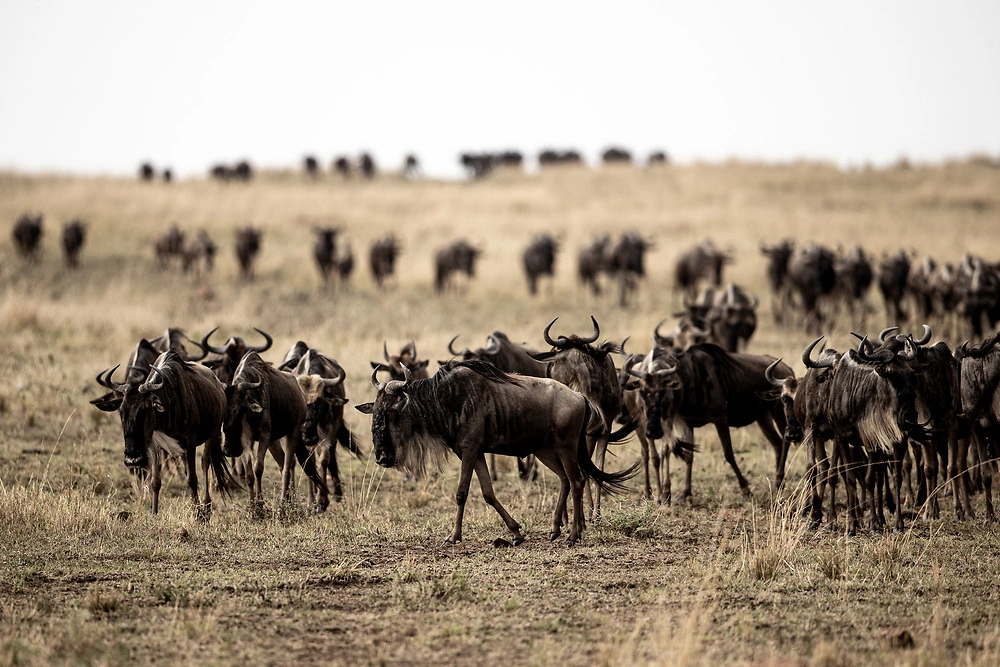
Wildebeest on our Masai Mara Safari. © Charl Stols
Quick links
Masai Mara Safari • Getting to the Mara • Topography and landscape • Why visit the Mara
Mammals of the Mara • Birdlife in the Mara • Camera equipment • Activities • Where to stay
The Masai Mara National Reserve is more than just a haven for wildlife photography; it’s an experience that every wildlife enthusiast or photographer should visit at least once in their lives. Covering an expansive area of Kenya, this iconic park offers a tapestry of breathtaking landscapes, endless plains, and an awe-inspiring variety of wildlife.
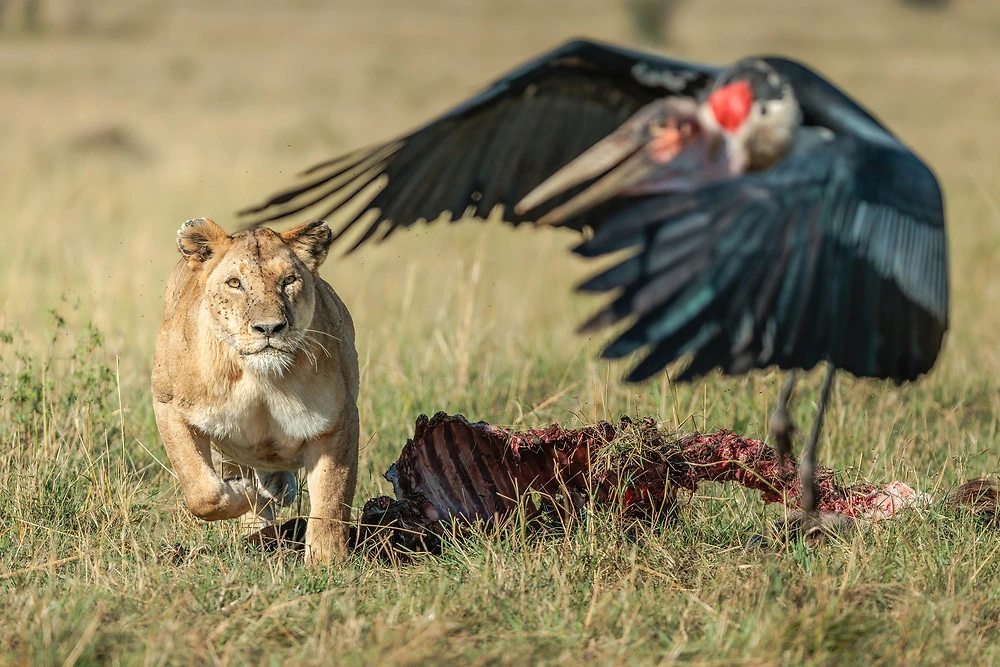
Lion and Marabou Stork in the Masai Mara National Reserve. © Sabine Stols
What sets a Masai Mara safari apart is its extraordinary year-round concentration of wildlife. Beyond the massive herds of wildebeest, zebras, and other antelopes that make up the Great Migration — which arrives from Tanzania between August and November each year — you’ll find an abundant population of elephants, buffalos, and giraffes.
Predators like lions, cheetahs, and leopards are frequently spotted, while rhinos are hidden treasures you might find in dense thickets. The iconic Mara River is teeming with plenty of hippos and crocodiles, adding another layer of excitement to this dynamic ecosystem.
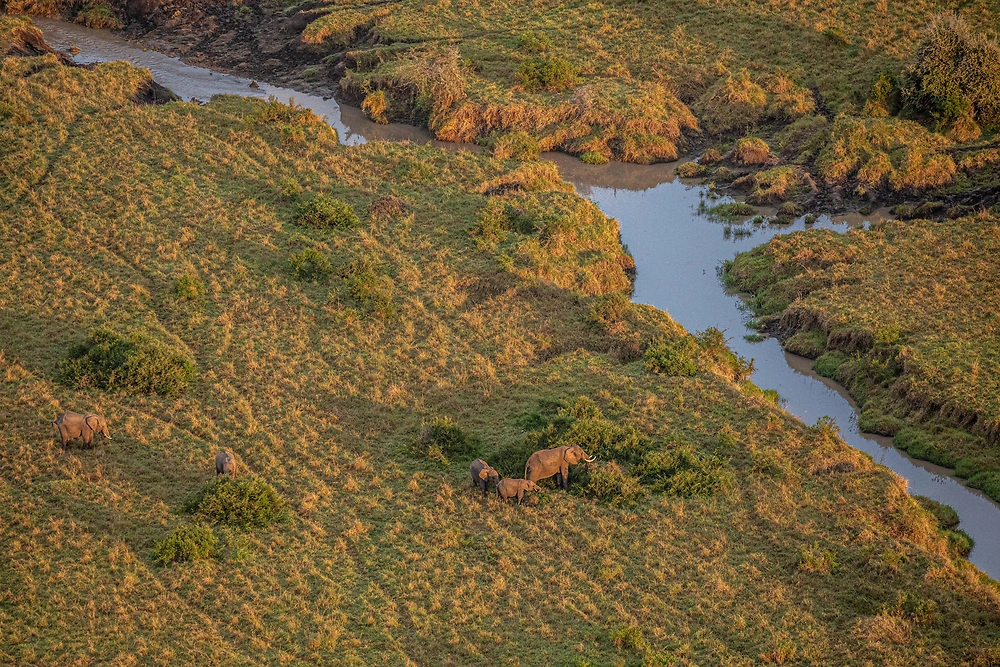
Elephants Near the Mara River in the Masai Mara on our Masai Mara Safari. © Charl Stols
Located along Kenya’s southwestern border, just across from Tanzania’s Serengeti National Park, the Masai Mara is part of a colossal ecosystem shared between the two countries. This natural wonderland is safeguarded through a blend of national reserves and community-run conservation areas, but we will talk more about that later.
Our Pangolin Photo Hosts agree that it’s not just the animals that make this place so special; it’s the atmosphere itself, especially during the tense river crossings, that makes this the ultimate safari destination. Truly, visiting the Masai Mara National Reserve is a bucket-list-worthy adventure that offers unparalleled adventure in East Africa.
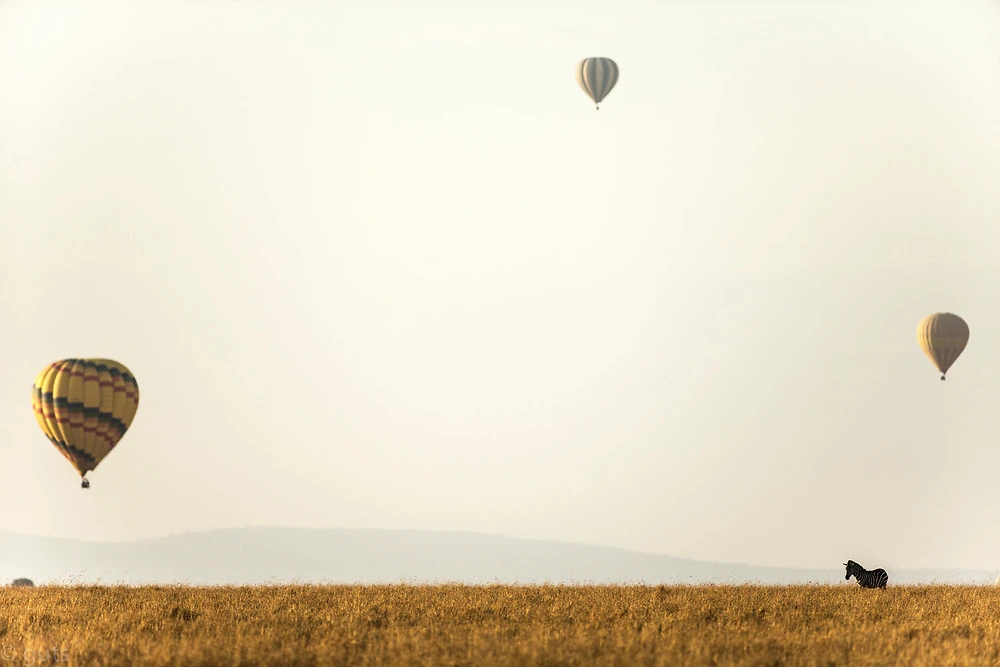
Hot Air Balloon Safari in Masai Mara Reserve. © Guts Swanepoel
When you land at Jomo Kenyatta International Airport in Nairobi, Kenya, you essentially have two main options to get to the Masai Mara National Reserve. One choice is to embark on an adventurous road trip that can take anywhere from five to six hours, depending on which entrance gate you opt for.
The other, quicker option is to catch an approximately 45-minute flight from Nairobi’s Wilson Airport, which is conveniently just a 30-minute drive away from the international airport. Depending on when your international flight arrives you may opt to overnight in Nairobi and then fly from Wilson first thing the next day. We have a few preferred hotels that fit this bill so chat to one of our consultants about options.
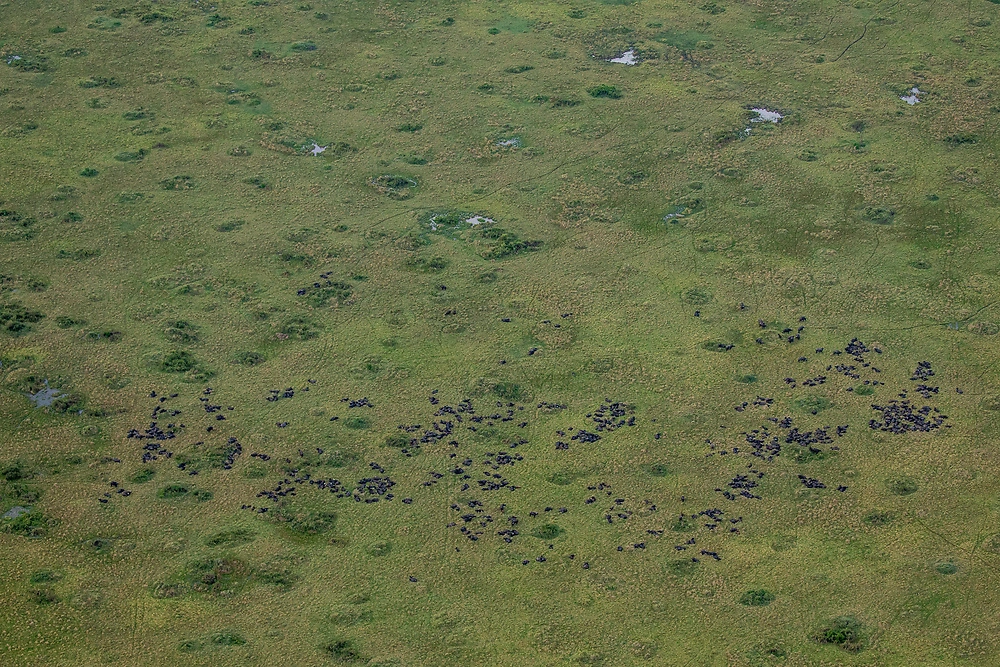
Wildebeest Migration by Hot Air Balloon on a Masai Mara Safari. © Charl Stols
If you’re leaning towards flying, you’re in luck! Several airlines operate flights from Wilson Airport to the Masai Mara, and airlines like Air Kenya, Safarilink, and the newer Governors Aviation are popular choices. Once you arrive, you’ll find nearly a dozen airstrips scattered across the reserve and nearby conservancies.
Each airstrip serves its surrounding lodges and camps to minimise your transfer time. So, whether you’re flying or driving, getting from Nairobi to the Masai Mara is easier than you might think, and each mode of transport offers its own unique kind of adventure.
The Masai Mara is a photographer’s haven; as mentioned earlier, the park is teaming up with wildlife, but what really makes this park something special is its iconic landscapes.
Pangolin Photo Host Sabine Stols says, “For me, the Mara is truly one-of-a-kind. Imagine vast, endless landscapes bustling with wildlife—especially the big cats. Spotting predators here is a breeze; they’re often lounging on termite mounds, scanning the horizon. It’s a photographer’s dream, really. And let’s talk silhouettes!
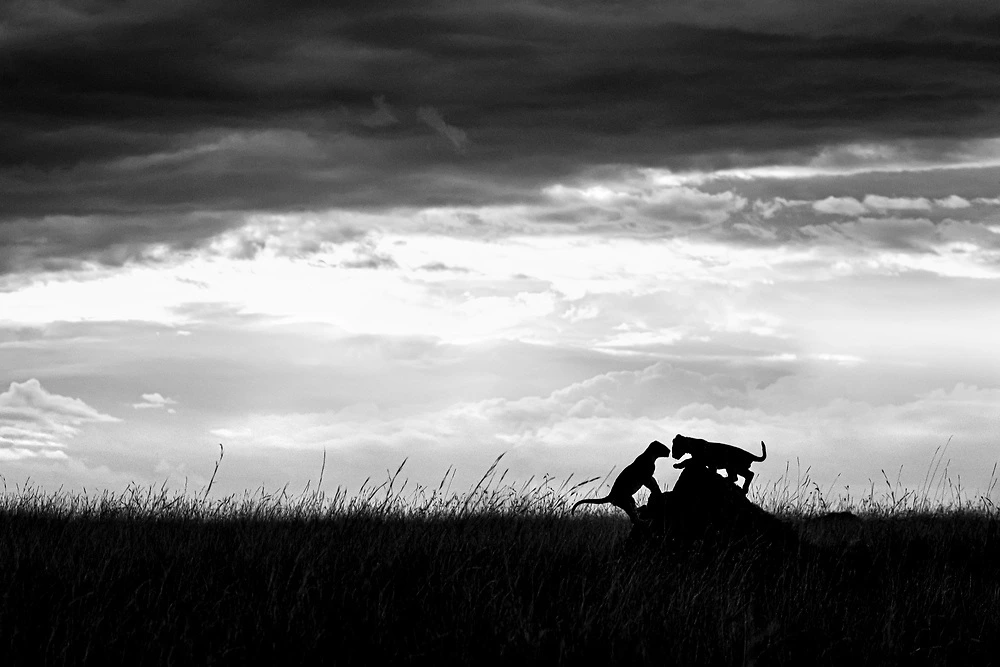
Two Lion Cubs Playing in Kenya in the Masai Mara. © William Steel
The expansive open spaces make it so easy to capture stunning silhouettes, whether it’s secretary birds perched in the scattered trees or the iconic figures of elephants, giraffes, zebras, and, if you’re lucky, even big cats. Honestly, I can’t think of a better place for silhouette photography!”
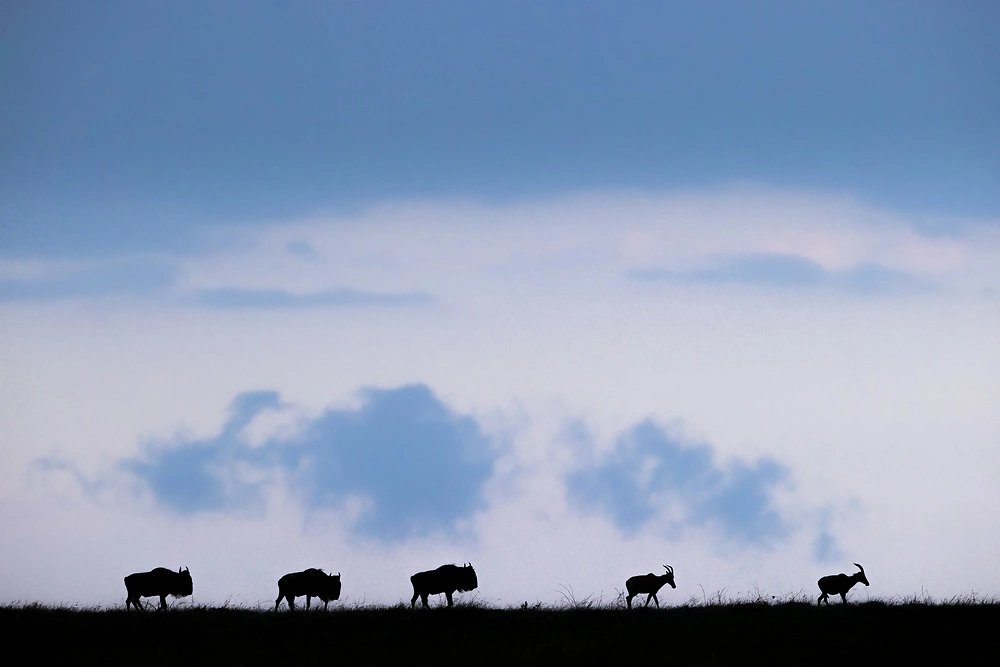
Wildebeest Trekking Across the Masai Mara. © Charl Stols
If you had to close your eyes and picture this reserve, you’d see rolling golden grasslands with acacia trees, rivers cutting through the terrain, and scenic escarpments towering in the background. All in all, a kaleidoscope of landscapes merges to bring this iconic safari destination to life.
When it comes to weather, the Masai Mara offers a comfortable climate, featuring mild daytime temperatures and cooler evenings. The region experiences two rainy seasons, one from March to June and another shorter one in November and December, but regardless of this, it offers panoramic beauty all year round.
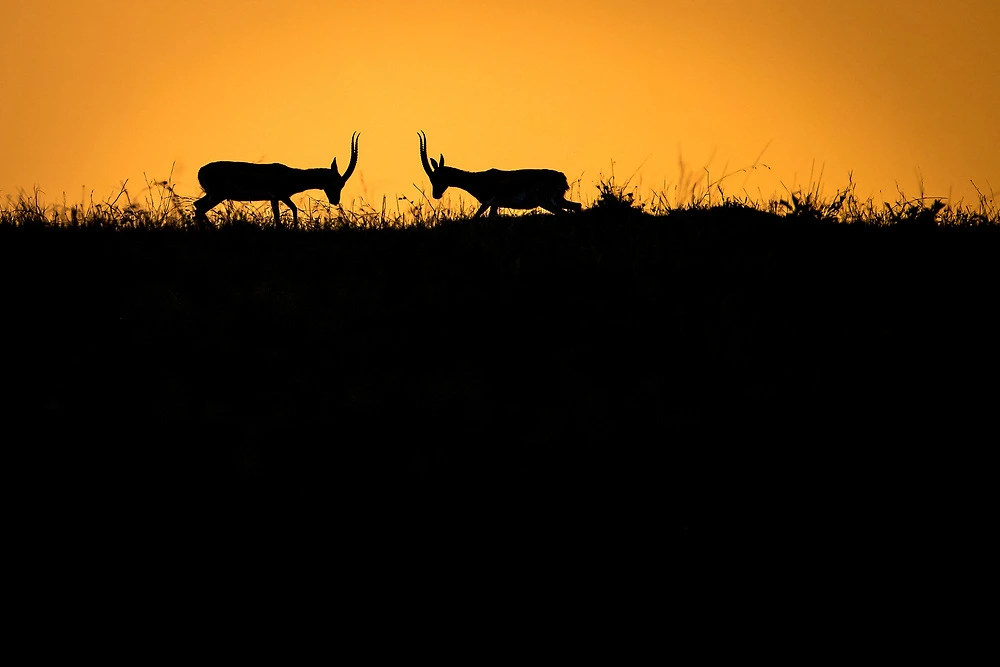
Masai Mara Silhouette Backdrop. © Sabine Stols
Nestled in the heart of Africa’s Great Plains, the Masai Mara National Reserve stretches across 1,510 square kilometres (or 583 square miles) of southern Kenya. Bordering Tanzania’s Serengeti National Park, it’s a cornerstone of the larger Mara-Serengeti Ecosystem—one of the Earth’s largest and most protected natural sanctuaries.
Though it’s been a wildlife haven for about 50 years, the reserve has evolved significantly since its inception in 1961. Originally covering just 520 square kilometres, including the Mara Triangle, it expanded over time and achieved National Reserve status in 1974. Some land was later returned to the local Masai communities, reinforcing the intricate partnership between conservation and local livelihoods.
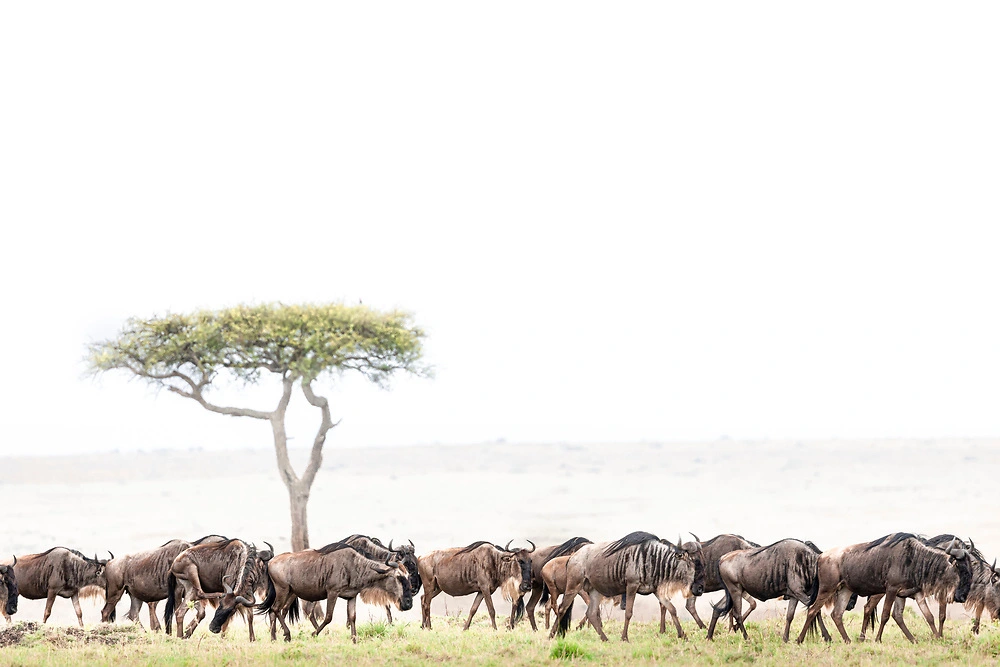
Multitude of Wildebeest on Our Masai Mara Safari. © Janine Krayer
The greater Masai Mara area comprises not only the main national reserve, which is unfenced and scattered with free-roaming wildlife but also several community-led conservancies. These include well-known names like Mara North, Olare Motorogi, and Naboisho.
The main Masai Mara safari reserve is divided into eastern and western sections, managed by Narok County and the Mara Conservancy, respectively. These lands are privately owned by Maasai families, who lease them to safari lodges. This symbiotic relationship allows the Maasai to invest in community development, from education to other social initiatives. Occasionally, you might even spot Maasai farmers and their cattle grazing peacefully in these conservancies.
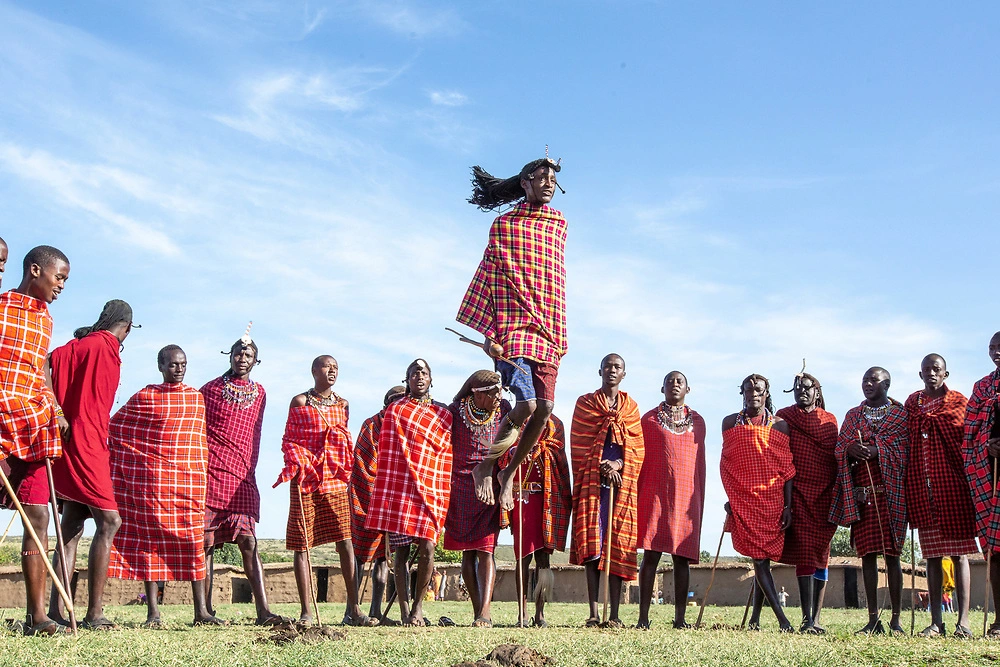
Vibrant Clothing of Maasai Warriors. © Janine Krayer
What does this mean for us as safari goers? Well, these community partnerships result in a more exclusive yet responsible safari experience. While the main reserve has a well-maintained network of both paved and dirt roads, which are actually some of the best we’ve seen on safari, the private conservancies often permit off-road driving. Whether you’re captivated by the Great Migration or after a more intimate wildlife encounter, the Masai Mara offers the best of both worlds, all while contributing to local conservation and community empowerment, which we avidly support.
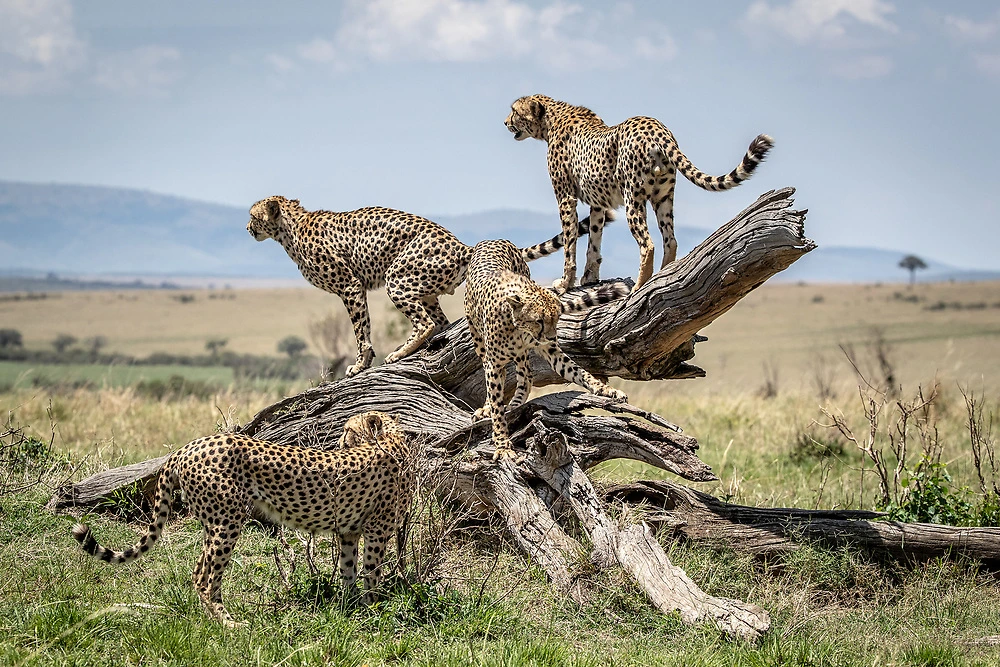
Cheetah Coalition in the Mara Triangle. © Sabine Stols
Sabine also notes that if you buy the right permits, you could spend a day exploring the Mara triangle. This is possible by crossing the New Mara Bridge or going via the Oloololo gate, and once you cross you’ll find yourself in a quiet corner of the Masai Mara that has a wonderful concentration of both mammals and birdlife. Offering you a perfect front-row view of the Mara River crossing during the Great Migration.
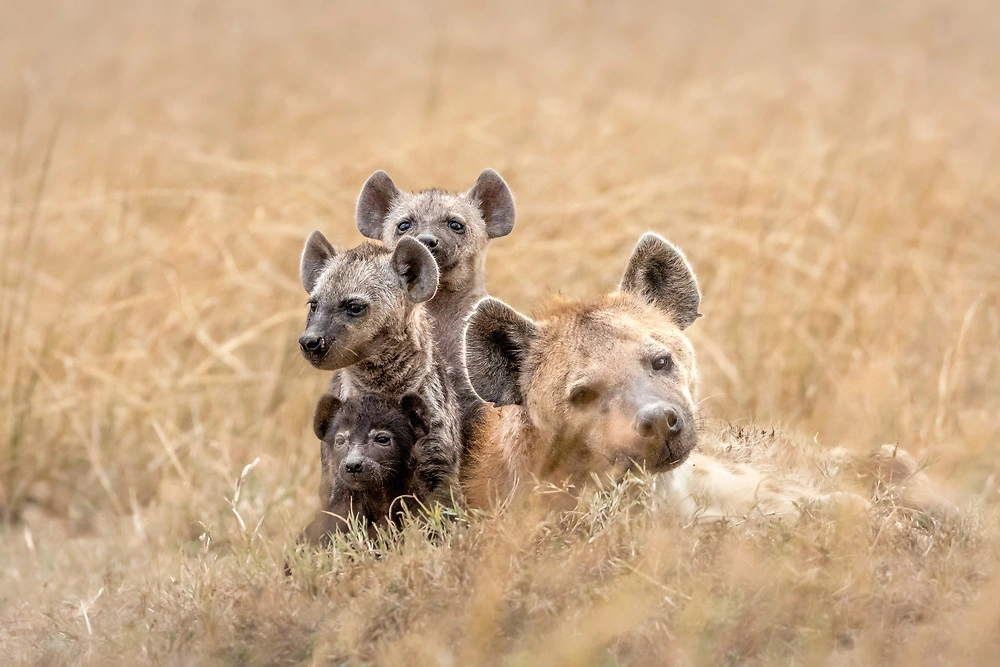
Hyena and Pups in the Masai Mara. © Janine Krayer
The Masai Mara is a veritable playground for mammal enthusiasts; thanks to its notably diverse landscape, it is home to over 80 mammal species. Grazers are plentiful even outside of the great wildebeest migration with large populations of antelope like Hartebeest and Topi.
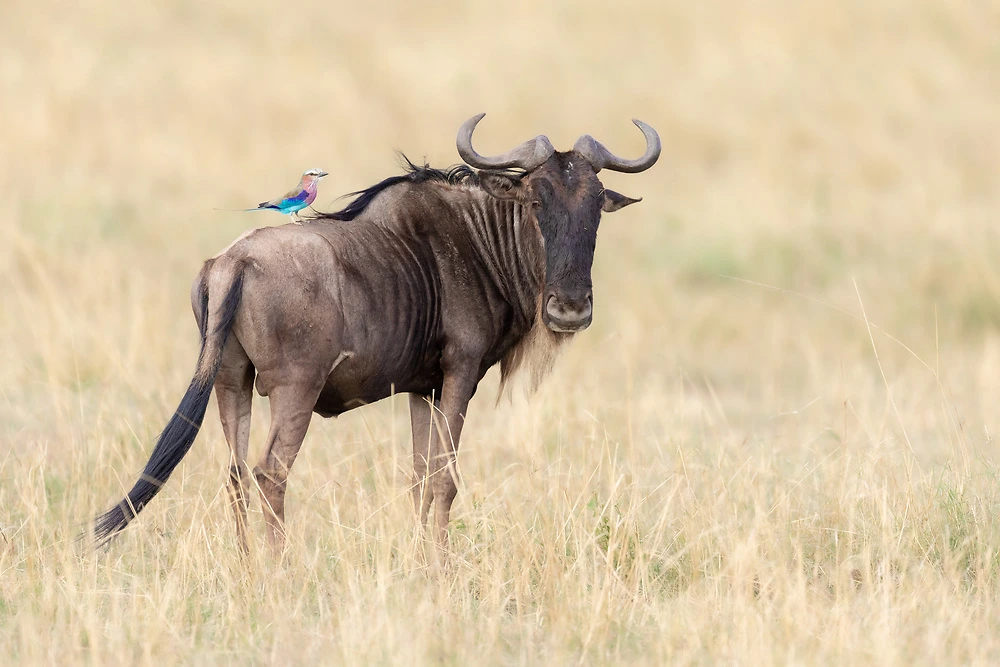
Wildebeest and Lilac-Breasted Roller. © William Steel
Not to mention the cheeky olive baboons and curious vervet monkeys that, no matter where you go on safari, will always be fun to photograph. Of course, the main attraction of the Mara will always be the spectacle of the Great Migration, which, as we know, features massive herds of wildebeest, zebra, and Thompson’s gazelles crossing the Mara River and hoping to dodge the enormous crocodiles lurking in the water.
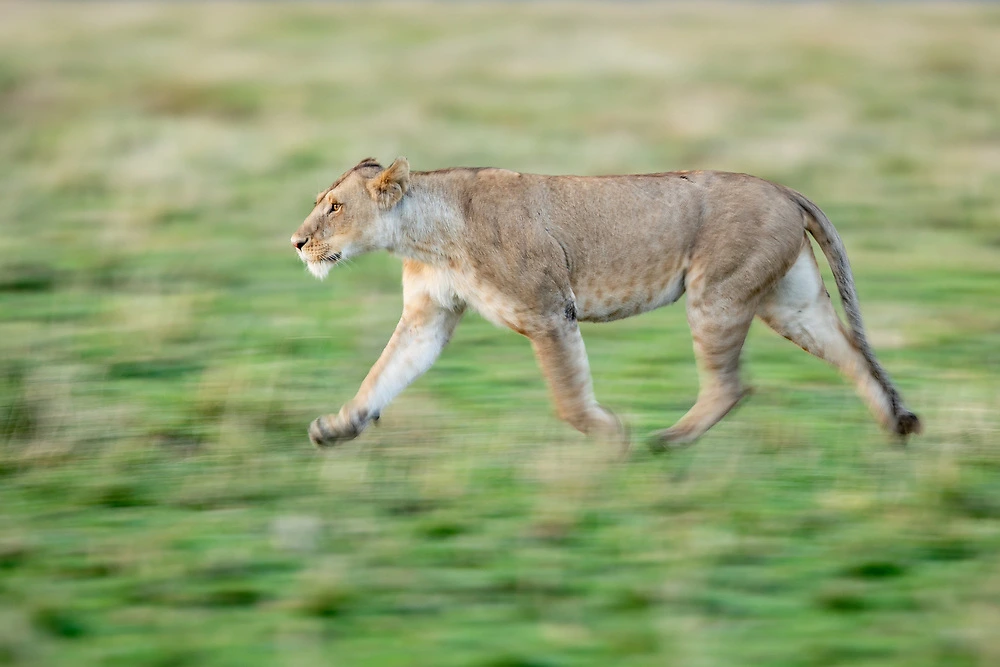
Spotting Lions on Our Masai Mara Safari. © Sabine Stols
But as photographers, the real stars of the Mara are its predators and their young. From the regal lions that patrol the vast plains or the elusive leopard hiding in a tree to swift cheetahs and playful hyenas, there is truly something to be seen around every corner of the park.
Ultimately, the Masai Mara offers an unparalleled mammal-watching experience that’s second to none.
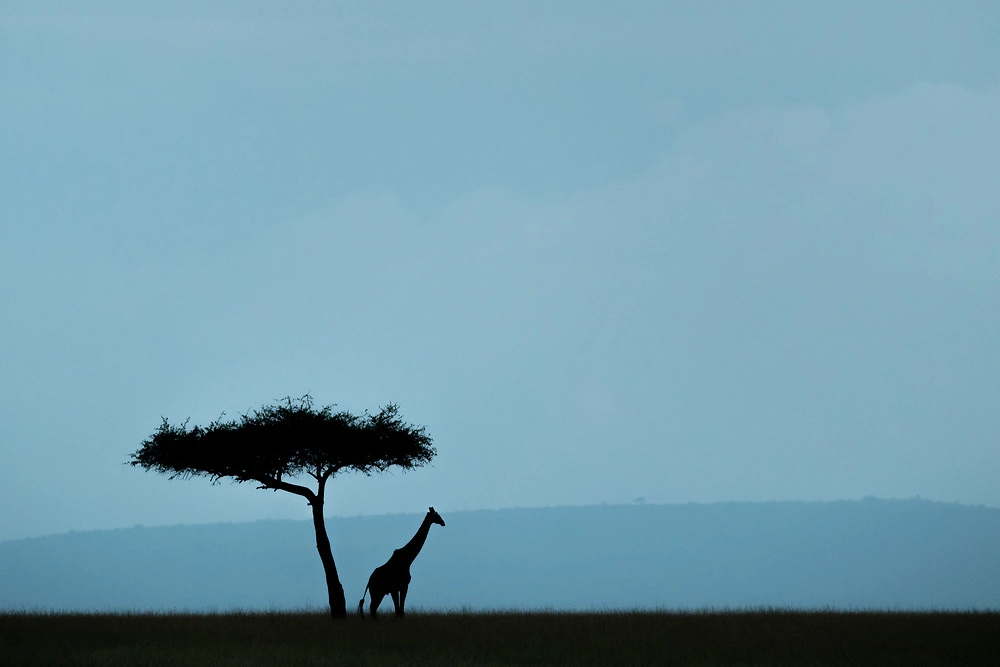
Giraffe Silhouette. © Charl Stols
The Masai Mara National Reserve is also well known for its diverse birdlife, boasting over 450 recorded species that range from year-round residents to migratory visitors, as well as a number of rare and remarkable endemics.
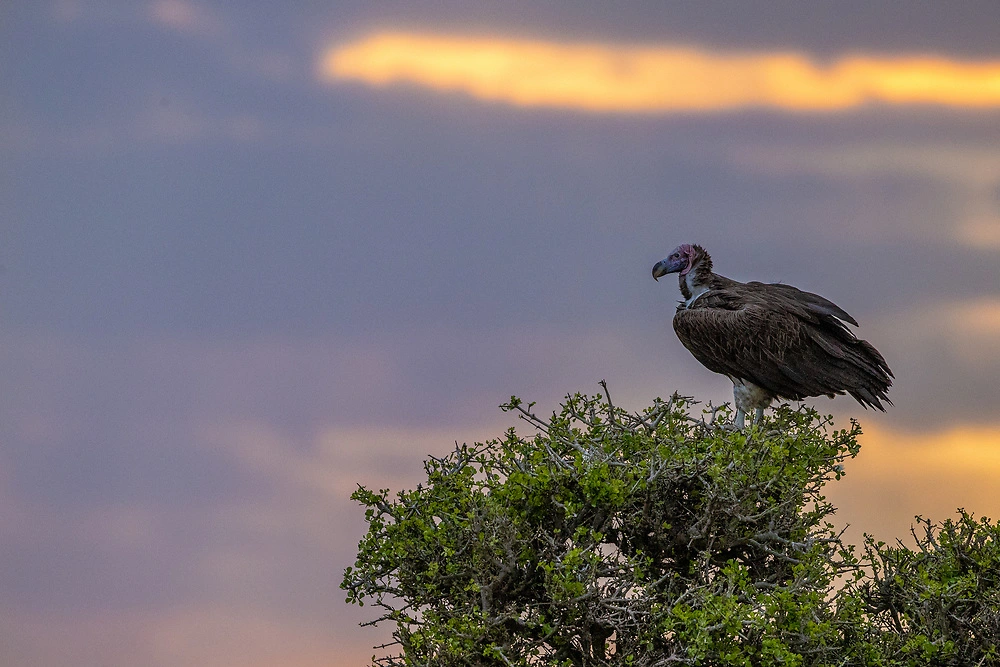
Lappet-Faced Vulture in a Tree in the Masai Mara. © Charl Stols
Notably, the reserve is a raptor-rich environment, featuring 57 species, including the Martial Eagle, African Hawk-Eagle, and Bateleur—often seen soaring over the plains. Ground birds like the Secretary Bird and the Kori Bustard, along with vibrantly coloured species such as the Lilac-breasted Roller and the Superb Starling, are familiar residents often found perched on savannah shrubs.
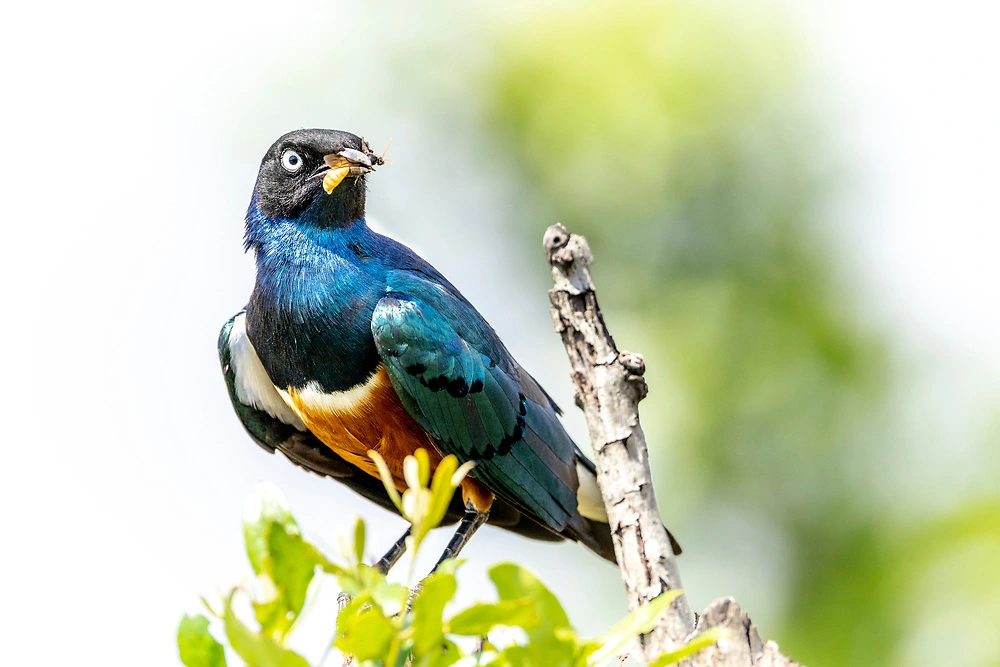
The Superb Starling. © Janine Krayer
The Mara also welcomes plenty of migratory birds between November and April, including European storks, swallows, and cuckoos, as well as raptors and waders like the Lesser Kestrel and the Caspian Plover. While the Masai Mara itself may not be particularly known for its endemic species, Kenya as a whole is home to unique birds like the Grey-crested Helmet-shrike and the Red-throated Tit, making it an all-encompassing birdwatching destination.
Pangolin Photo Host Sabine Stols has visited the Masai Mara multiple times over the years, gaining extensive expertise on the best camera equipment for a safari adventure. Here’s her advice: “I highly recommend a zoom lens in the range of 100-400mm, or even up to 600mm, to capture distant scenes like cheetah hunting. Generally speaking, we do get fairly close to the animals, and in my opinion, a 400mm lens is perfect.
If you have a 400mm or 500mm prime lens, definitely bring it along. These prime lenses are often faster than zoom lenses, making them ideal for low-light conditions, which is when predators are usually active, be it early in the morning, late in the afternoon, or on overcast days. The Mara also offers stunning landscapes featuring dramatic clouds and beautiful sunsets; for these, a 70-200mm, 24-70mm, or 24-105mm lens is excellent.
Anything wider is generally not necessary. If you’re planning to experience one of the iconic hot air balloon rides, a 70-200mm or 100-400mm lens is ideal, as it allows for flexibility between capturing wide landscapes and zooming in on animals. Don’t forget a camera strap, especially for hot air balloon rides, to secure your camera around your neck.
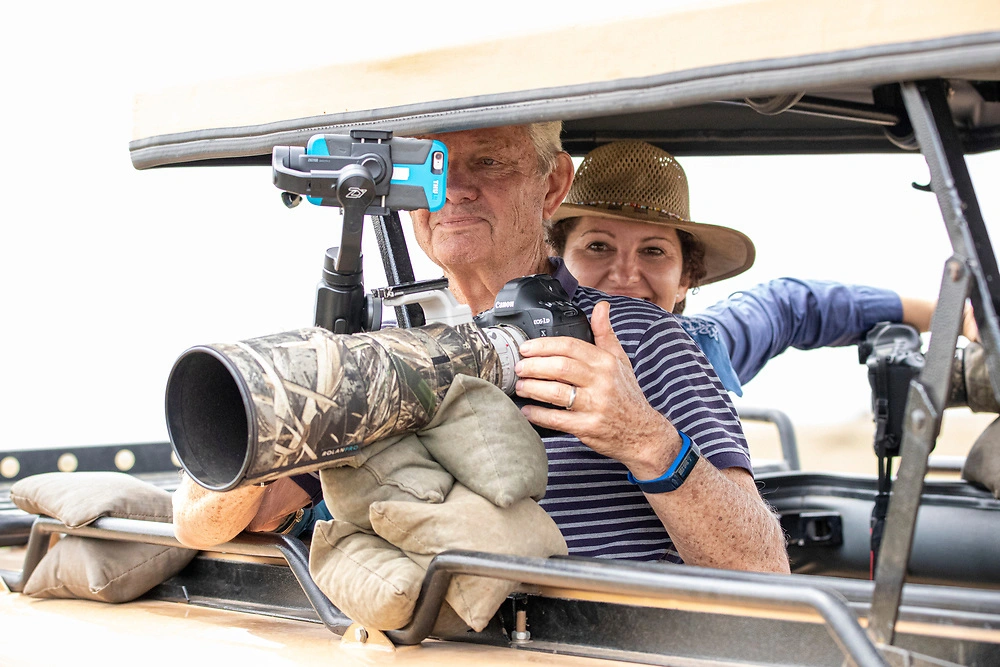
Stabilised Photographic Equipment on a Masai Mara Game Drive Vehicle. © Janine Krayer
My go-to lens is a 400mm f/2.8, which is exceptional for creating buttery smooth backgrounds and offers just the right amount of reach. I also carry a 100-500mm zoom lens for flexibility and a 24-105mm for wider shots. I have a 1.4x and 2x teleconverters for added range when needed, and they are conveniently small for travel. Given the long days and limited culling time, I make sure to pack enough hard drives so I never run out of storage space. And since it can get dusty at times, I always bring my Kikoy to cover my gear while driving around.”

Want to know more about the different lenses? Check out this Masai Mara Video that Pangolin Photo Host, Charl Stols did.
As you can see, the Masai Mara is an incredible destination for a photographic safari. At Pangolin Photo Safaris, we take pride in our customised photographic vehicles, and in this short video, Charl will explain why we configure our safari vehicles the way we do. Each of our game drives accommodates only three to four guests per vehicle, ensuring an incredibly personalised experience. Our long-wheelbase Toyota Land Cruisers come equipped with pop-up roofs for standing, as well as an array of bean bags and camera mounts.
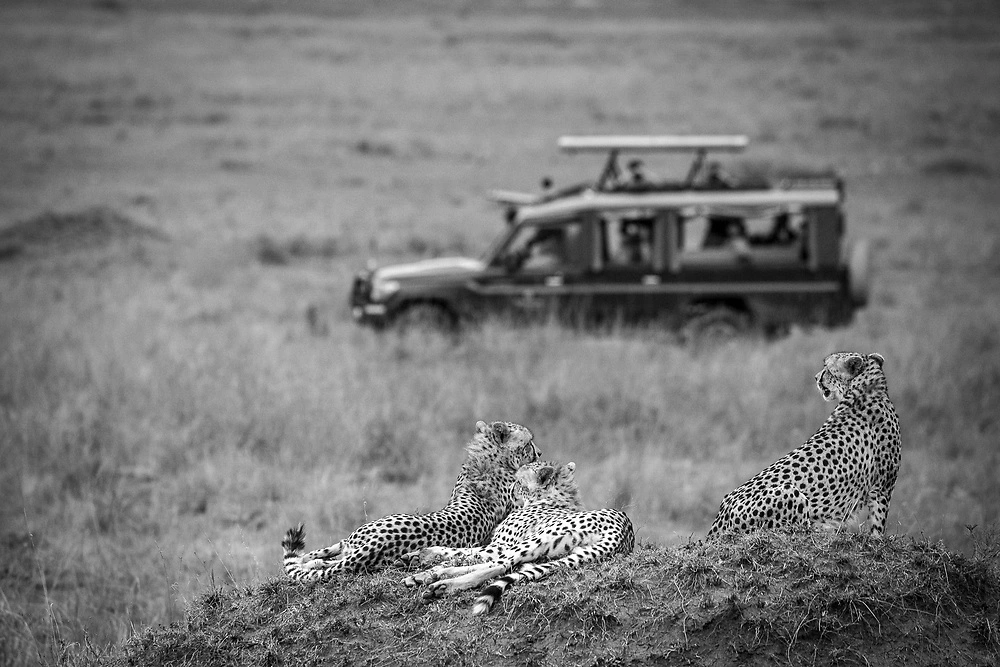
Cheetah Coalition Spotted on Our Masai Mara Safari. © Janine Krayer
These vehicles also feature plug points, allowing you to charge your batteries or even do some editing on your laptop while waiting for a wildebeest herd to cross the Mara River. One of our favourite activities is our bush lunches, where guests can take a midday break for refreshments and socialising.
Beyond the safaris, other activities in the Masai Mara offer a glimpse into the authentic daily rituals of the Maasai people. By going on a Maasai cultural visit, you can spend a morning learning about these once-nomadic tribes. Of course, no trip to the Mara is complete without a hot-air balloon ride over the vast plains of the reserve. This experience provides a unique perspective and fantastic photographic opportunities. Watch the video below to see what a day or two in the Masai Mara could look like.
Where to stay during a visit to the Masai Mara
The Masai Mara offers a diverse array of accommodation options, perfectly tailored to suit various tastes and budgets. Choices range from rustic tented camps for an authentic safari experience to lavish lodges and luxury ‘resorts’ that provide five-star amenities, and of course, something in between all of that too. Some of these accommodations are strategically situated within the boundaries of the national park, giving guests unparalleled access to game drives and wildlife spotting right at their doorstep.
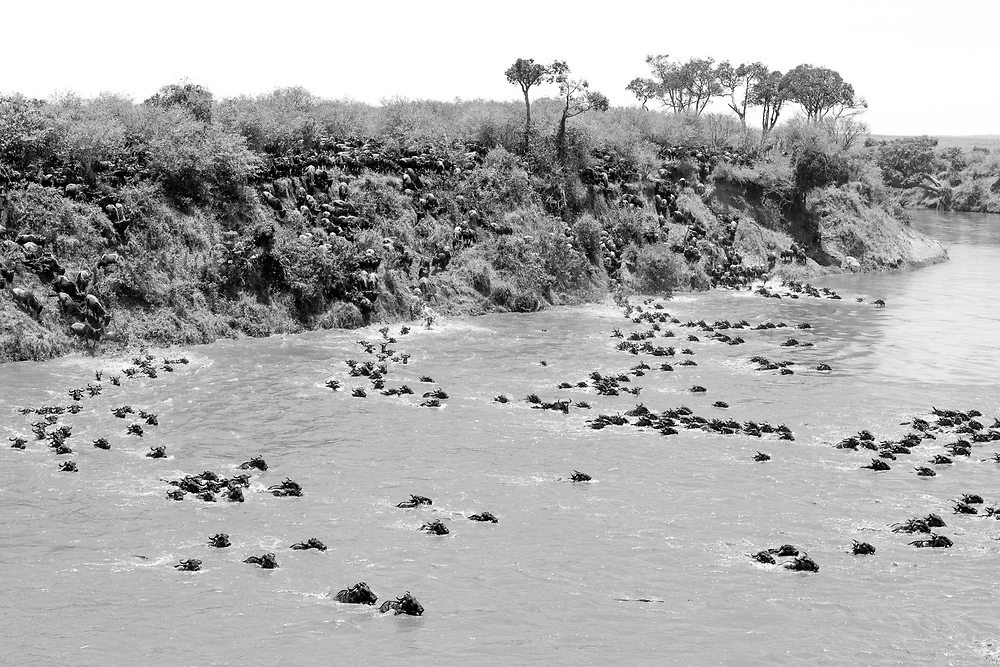
Wildebeest Migration Crossing the Mara River in the Masai Mara. © William Steel
Others are nestled in the private conservancies surrounding the park, providing exclusive experiences like night drives, guided nature walks, and off-road adventures—activities that are not allowed within the national park itself. Unique dining experiences such as bush dinners or sundowner cocktails are often a highlight at these conservancy-based lodgings. Importantly, the reserves and surrounding conservancies are unfenced, allowing wildlife to roam freely across this expansive ecosystem, so it can’t be said that one area is better than another.
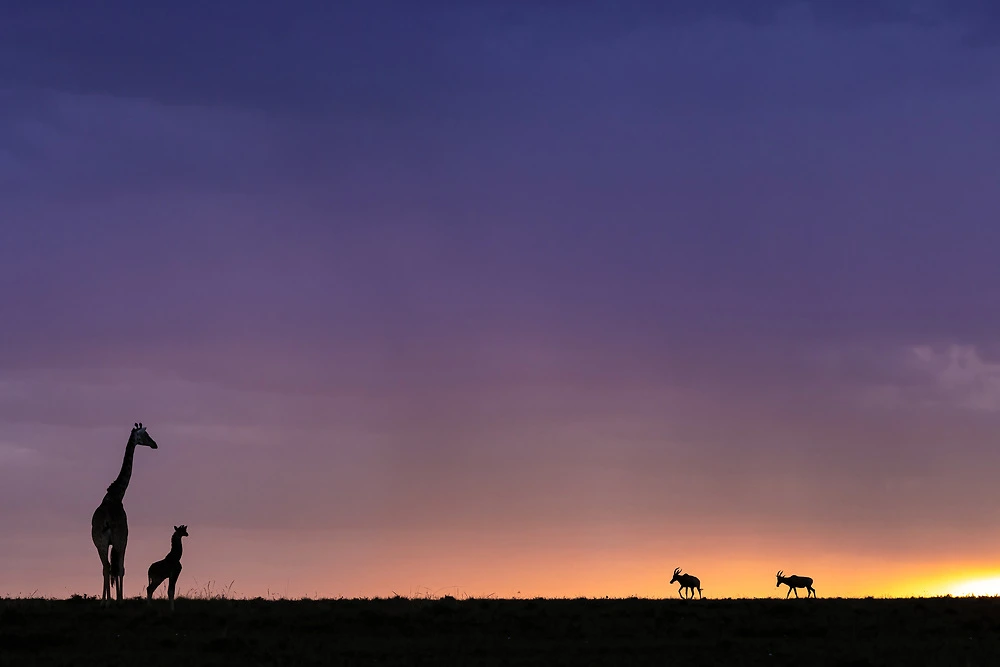
Giraffe and Topi Silhouette. © Sabine Stols
In conclusion
There’s a reason why we continue to return to the Masai Mara year after year. It’s not merely a location; rather, it’s an unmissable experience for both wildlife photographers and enthusiasts alike. From capturing the Great Migration to photographing iconic predators out in the open without searching behind bushes, this reserve truly embodies the essence of quintessential Africa.
The Masai Mara is however a year round destination and outside of the Migration we can get even better predator sightings as the big cats are really working much harder to find and catch prey. Dont discount the Months from November through to May as a potential time to visit the Mssai Mara national reserve
Moreover, accessing the reserve has never been easier—with a quick flight from Nairobi (which offers its own scenic flight) and a diverse range of accommodations, there’s truly no excuse not to experience this park at least once.
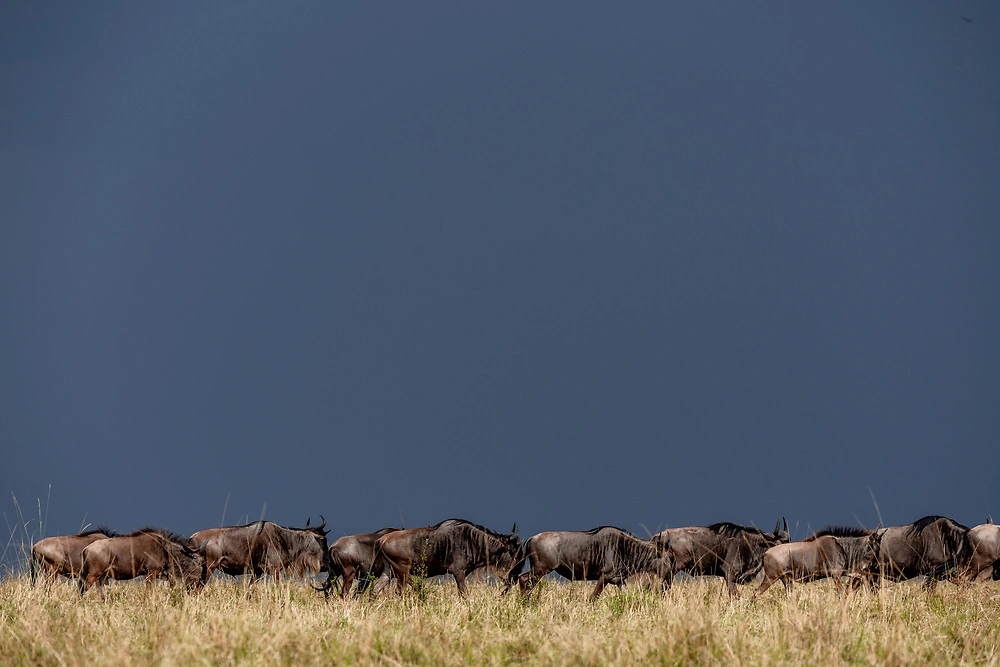
A Herd of Wildebeest. © Janine Krayer
Not to mention, the Masai Mara serves as the perfect starting or finishing point to explore more of Kenya. We like to combine time in the Masai Mara with a few extra days in Samburu (for a very different landscape and certainly different animals) or perhaps some time in Amboseli. Travelling between these iconic destinations is relatively easy using Wilson as a sort of hub.
If you’re after something a bit different from a traditional safari, consider trekking with the gorillas and chimpanzees in Uganda and visiting the iconic Shoebill Storks.
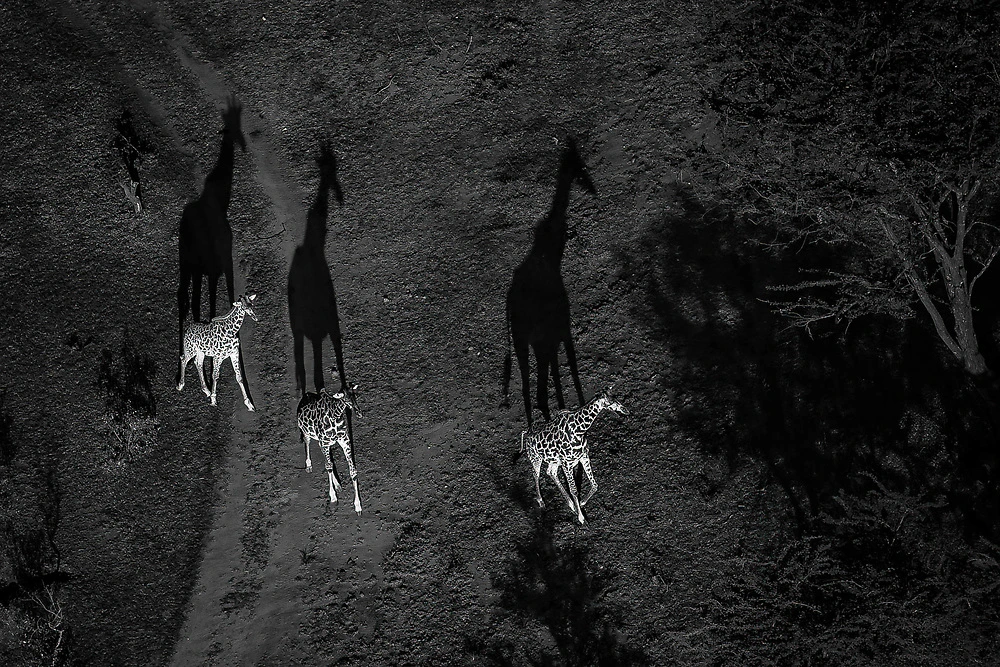
Giraffes in the Masai Mara Triangle. © Sabine Stols
Possibilities are wide open; feel free to get in touch with our expert safari planners to learn more.
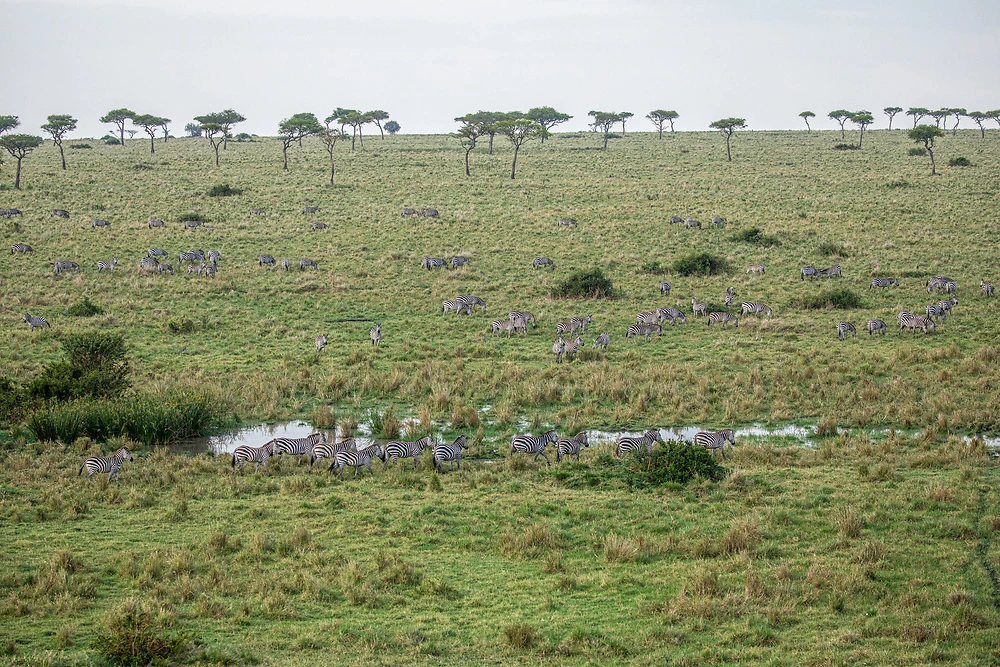
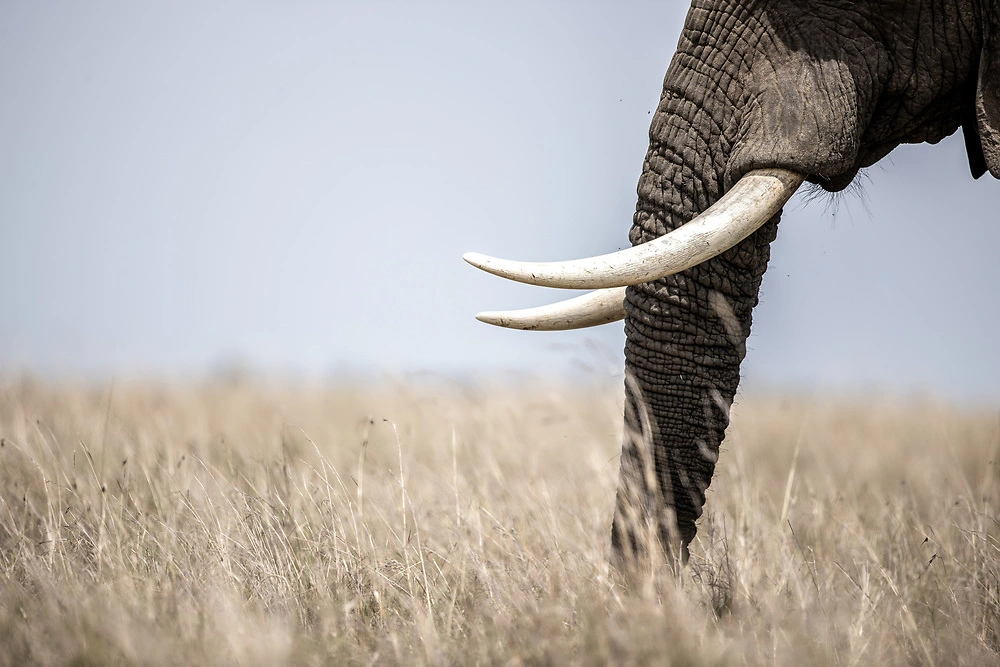
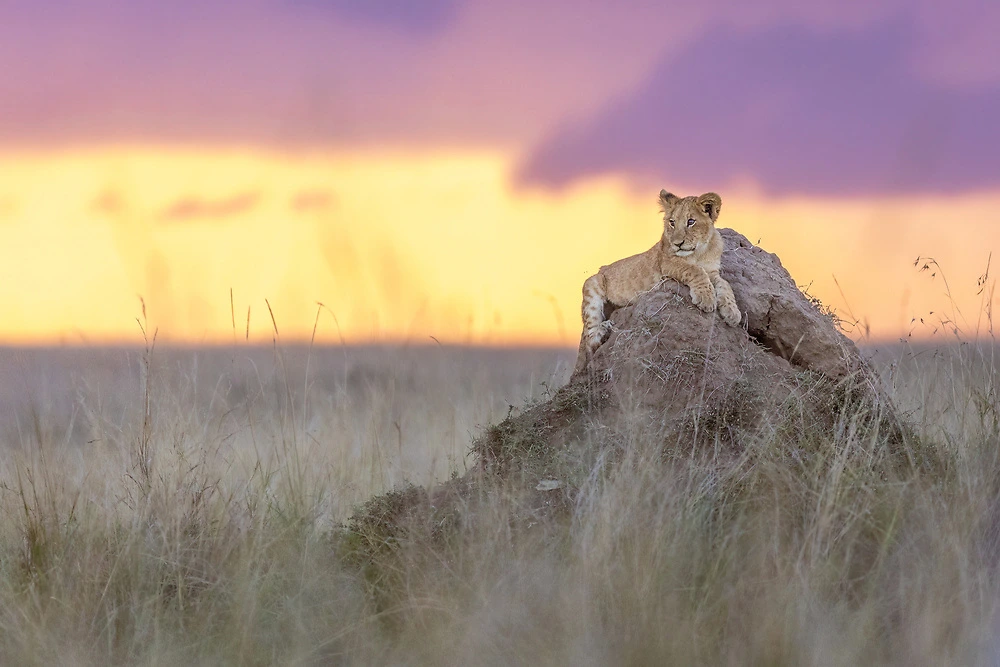
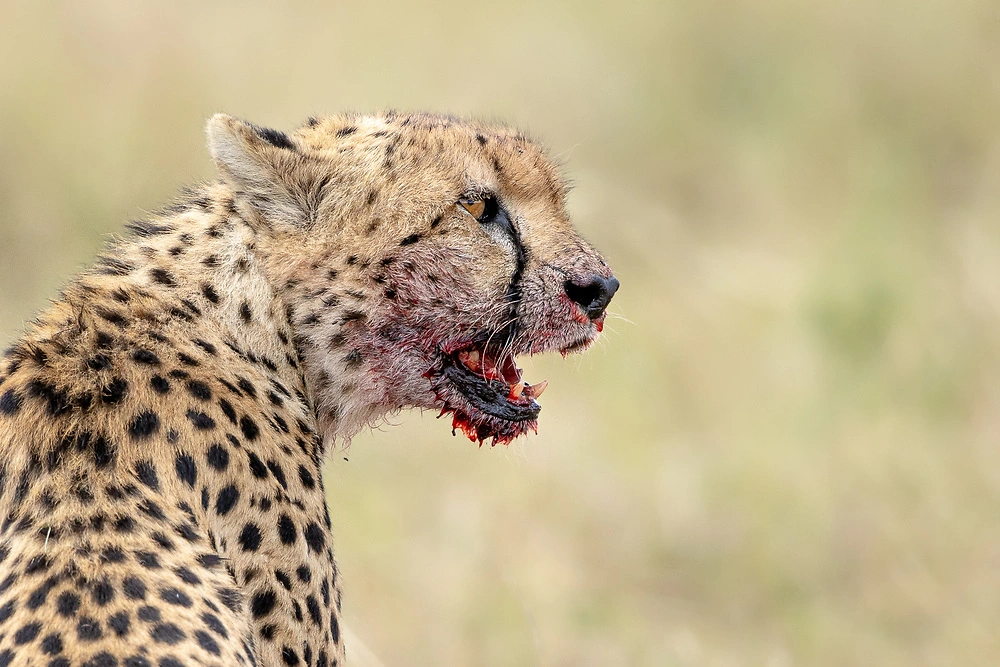
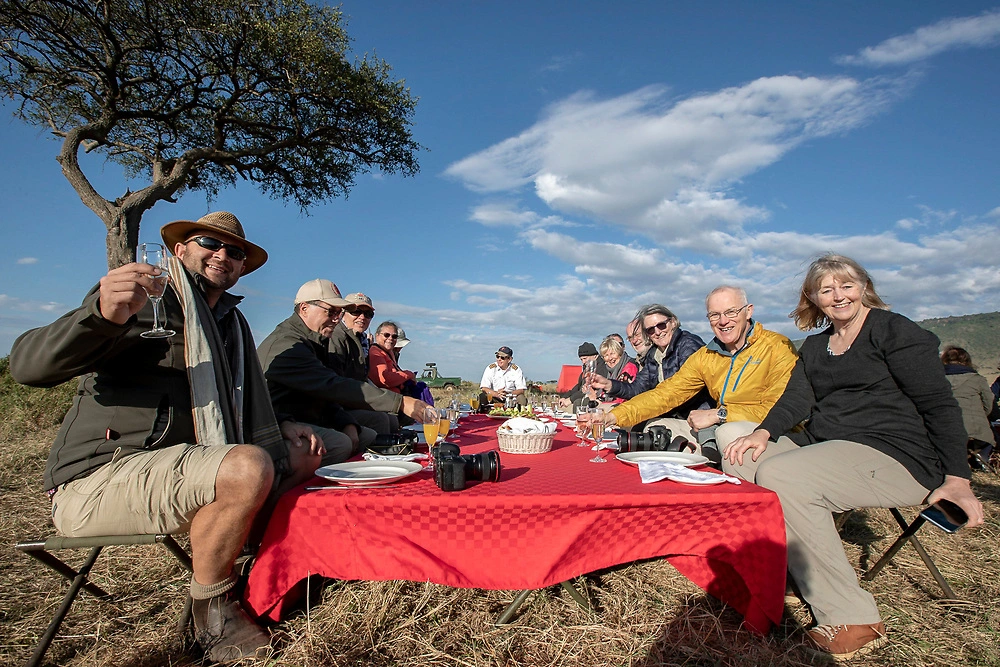
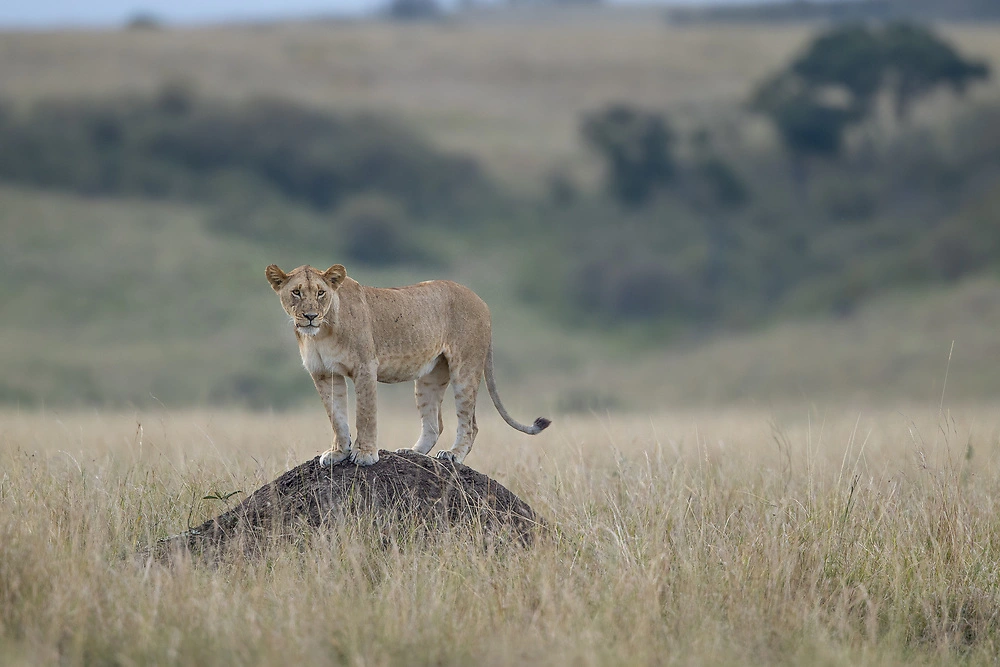
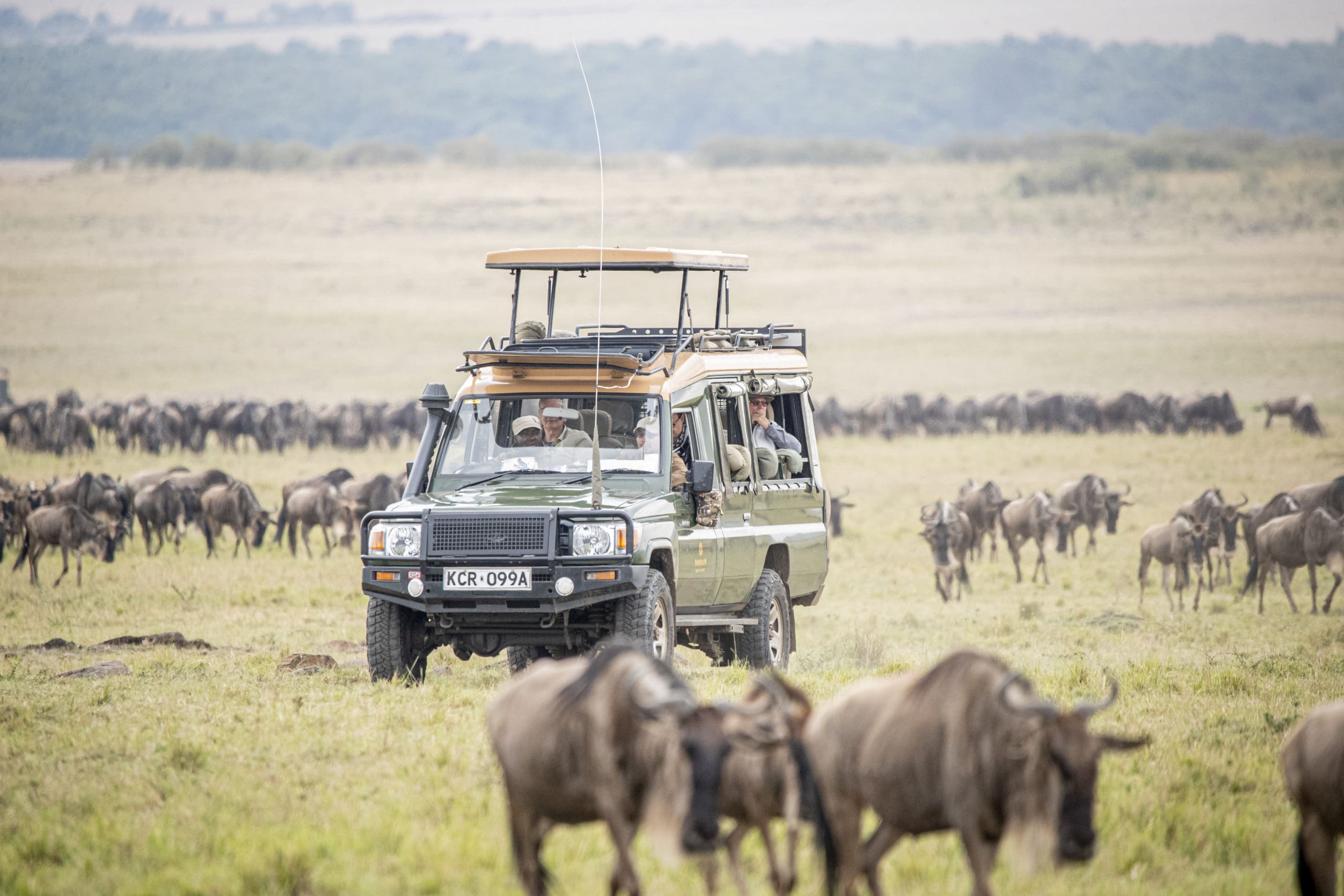
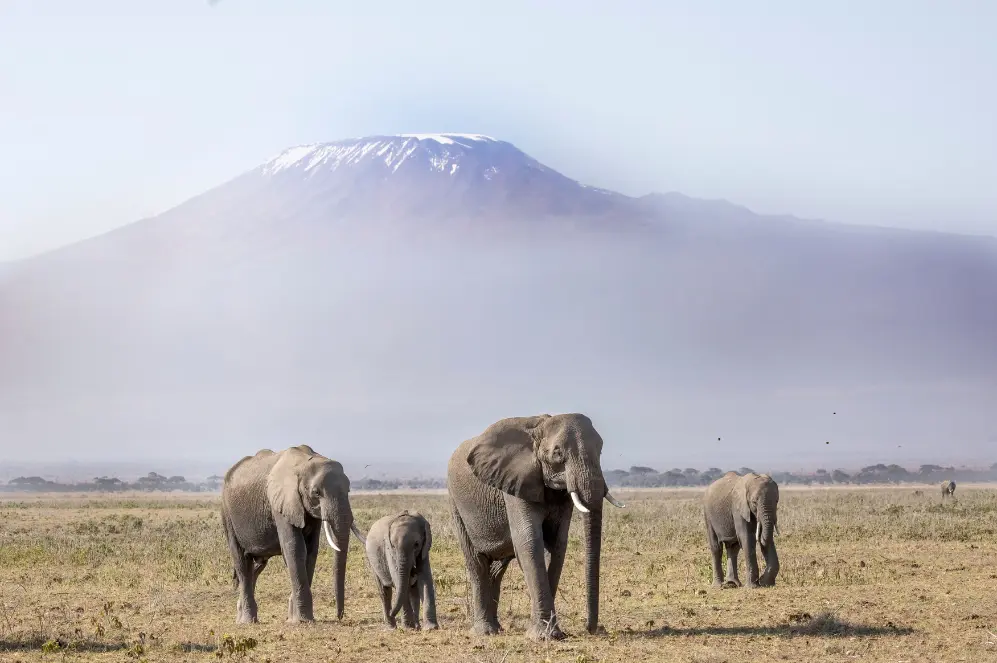
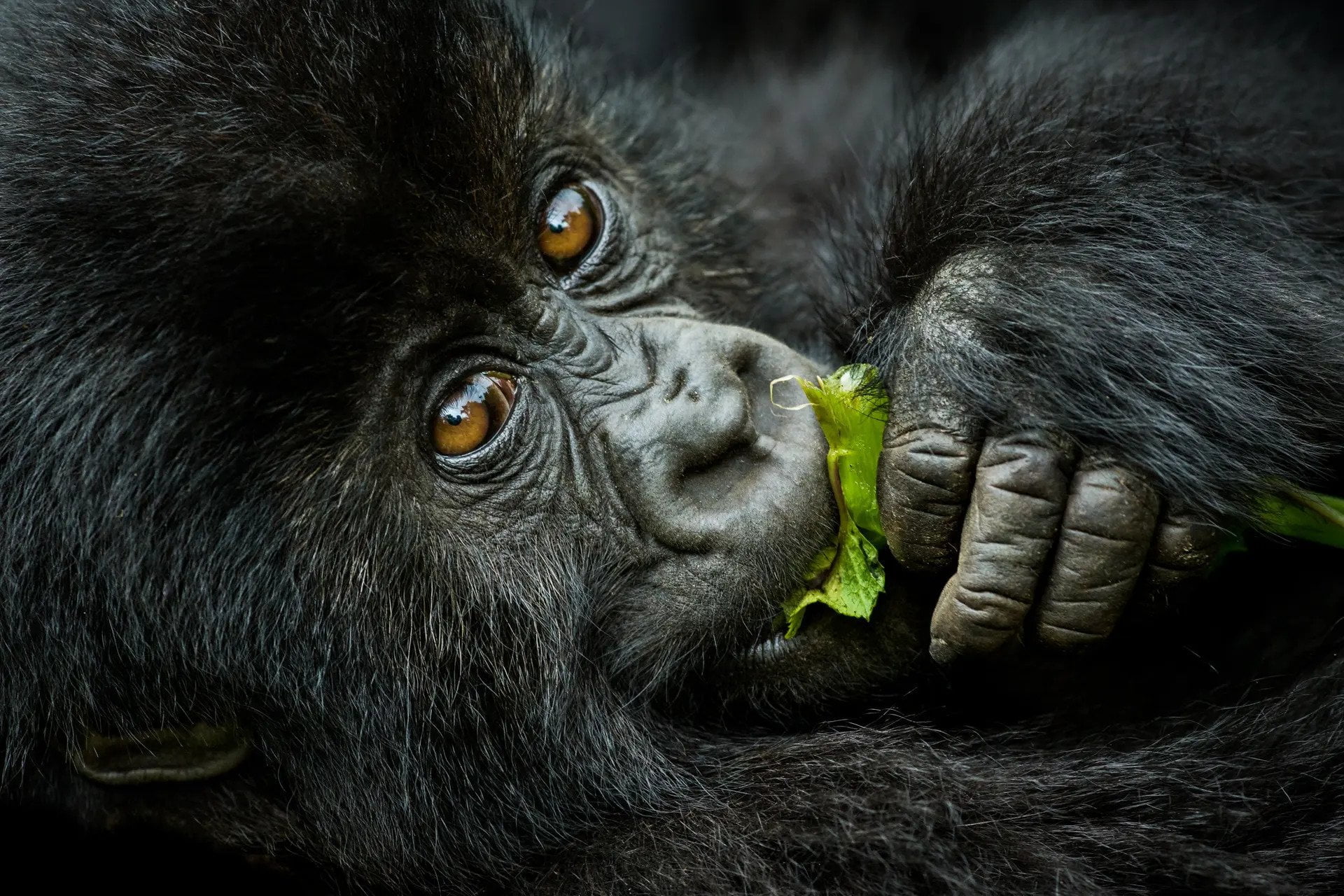
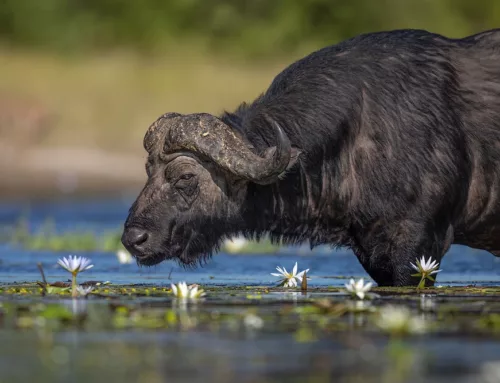
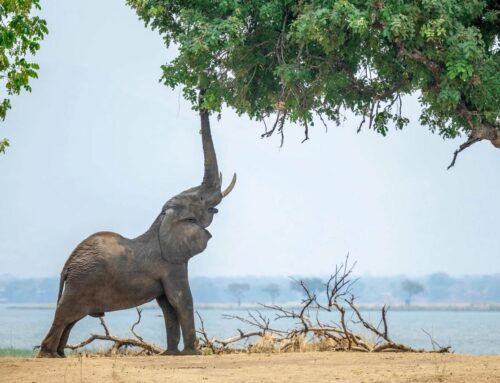
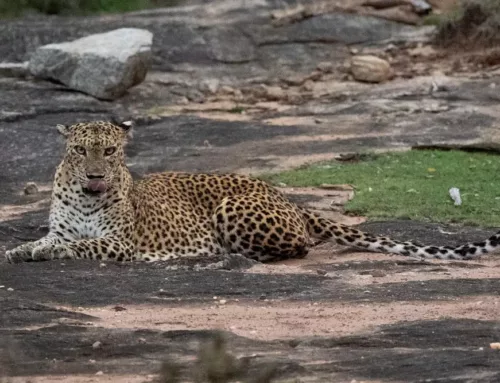
Leave A Comment
You must be logged in to post a comment.